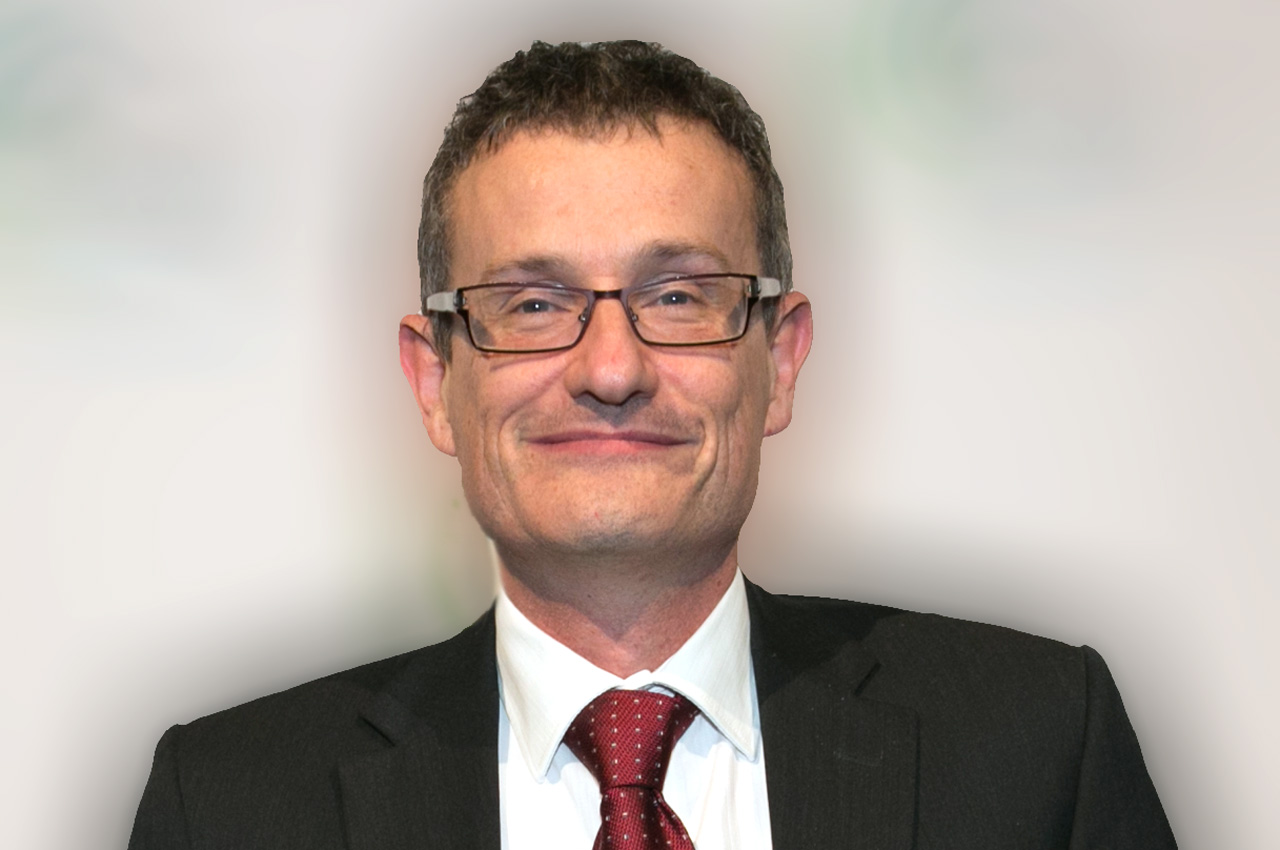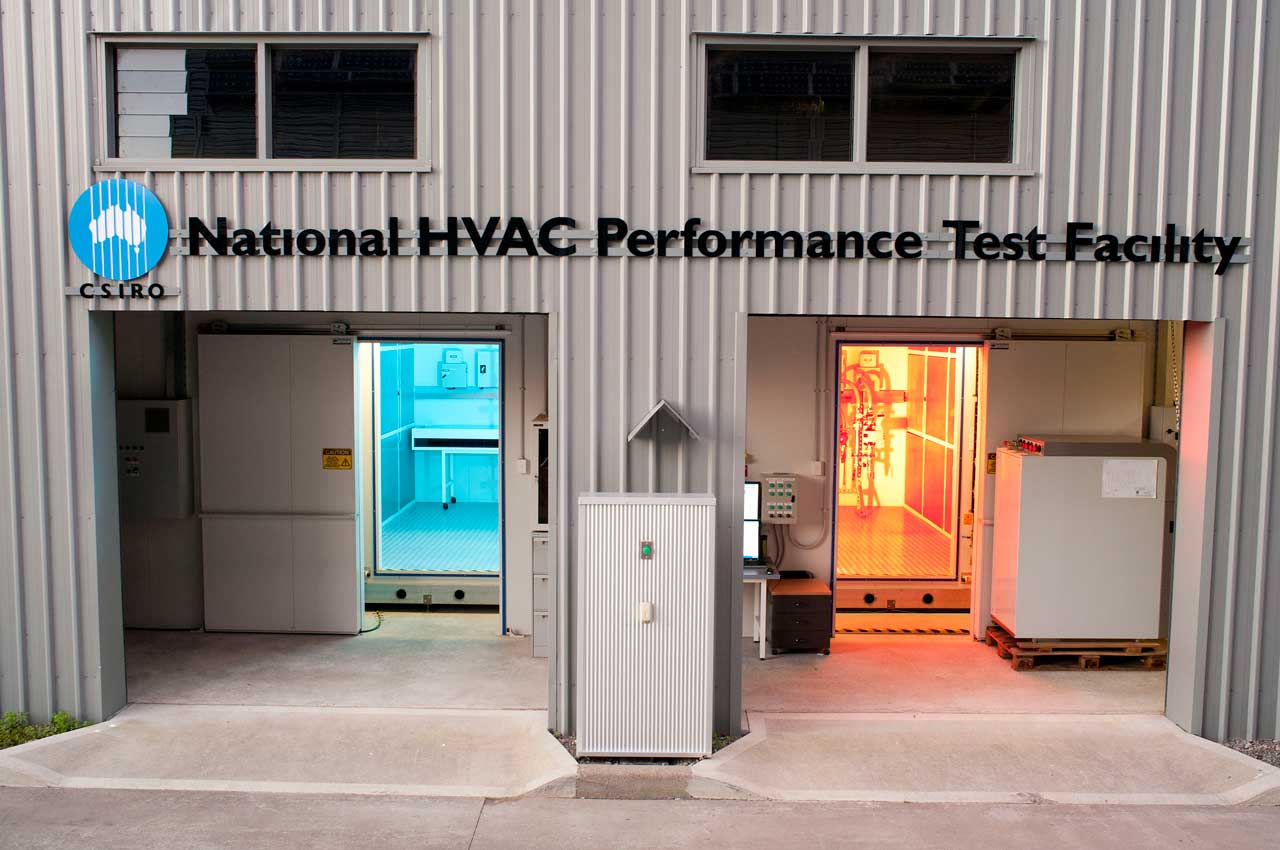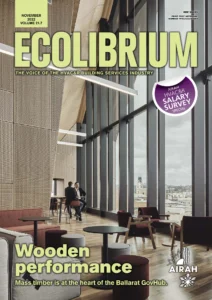The enthusiast

Dr Stephen White, F.AIRAH, has been name the winner of the 2022 James Harrison Medal, AIRAH’s highest individual honour. Ecolibrium broke bread with him about the news.
How does it feel to be recognised by winning AIRAH’s highest honour?
I feel surprised, humbled, excited, thankful and much more. I particularly feel privileged to have been given opportunities over my career (as a CSIRO scientist) to push the boundaries of what can be done in our industry, to broker partnerships and to find ways of supporting our industry. It’s a pretty unique role that CSIRO has in Australia, with a licence to have a crack at making a difference.
And, of course, I feel indebted to lots of friends and colleagues in the industry who have worked for me, supported me, turned my ideas into reality, and generally made turning up at work a joy.
What would you say has been your biggest professional achievement?
In my line of work, initiatives seem to roll in waves of five to 10 years. It takes a fair while to tool up, build research infrastructure and assemble research coalitions, and then conduct research as a multi-disciplinary team. Most of these initiatives have commercial or policy objectives. With no guarantee of success, there’s only a few rolls of the dice in a career, to make impact. Luckily, some of my initiatives have come off.
One of my early initiatives on electricity industry demand management led to the start up of Energy Response Pty Ltd (now morphed into EnelX), Australia’s first dedicated electricity demand-side aggregation company. If I had a crystal ball now (and could see our current energy transition issues), I might have kept pushing harder on the topic area at the time, rather than moving on after the start-up was launched!
I look back fondly on my seven-year role as program leader in the Low Carbon Living CRC and chair of the ASBEC Sustainable Housing Task Group. I like to think that the Sustainable Housing Construction Industry Roadmap, and the Renovate or Rebuild reality TV show, which came out of that period, have been influential in driving market interest in higher-performance housing.
Transitioning the NatHERS software to produce certificates and to capture house rating data for re-use was also an important step toward improving implementation of the NatHERS compliance pathway in the National Construction Code. I believe all these activities have helped to build industry confidence to be able to proceed toward the next step of disclosure of home energy efficiency at point of sale in the real estate market.
In more recent times I helped lead the Affordable Heating and Cooling Innovation Hub (i-Hub) initiative, building on AIRAH’s PRIME roadmap. The Data Clearing House digital platform was developed over the course of i-Hub, involving collaboration between CSIRO’s Data61 and Energy Business Units, and lots of industry partners. While there’s still lots of work to do to address interoperability and data management barriers that have plagued the industry, I’m very proud of the team’s work and the momentum that has been achieved. Watch this space.
We don’t hear so much about solar heating and cooling any more. What has taken the emphasis away from it?
Another of our initiatives was a push on solar cooling. We did a lot of work on solar thermal-based cooling. Unfortunately for that technology, solar PV has become sufficiently cheap that solar thermal cooling probably can’t compete. So now, as the grid becomes increasingly supplied by solar PV electricity, our air conditioning is progressively going solar anyway – without having to force a direct coupling between renewables and air conditioning.
Clearly, not everything I’ve touched has been a winner. But it was a good feeling for me to get the chance to co-author the International Energy Agency’s Solar Cooling Design Guide, and to get a standard in place (AS5389) that could be used to support innovative cooling technologies. I never thought I would write a book! It’s nice to feel that there is a coherent record, so that the lessons learnt around the globe on solar thermal cooling can be picked up and future mistakes avoided.
Where did the idea for the i-Hub generate, and are you happy with how the project has unfolded?
Research is at its best when it’s listening to industry and supporting large-scale cross-industry collaboration. The ideas for the i-Hub were sifted from the PRIME industry roadmap. Where else would you start after all the great consultation work led by Phil Wilkinson, Bryon Price, Vince Aherne and the team?
I literally filtered through all the recommendations, taking the ones that had a significant technology-innovation/industry-growth element to them (leaving aside all the regulatory ones). Then we went about building a coalition of interested partners, structuring around common themes, and using processes reminiscent of a Cooperative Research Centre.
i-Hub has been a great success, with great leadership from Tony, Vince, AIRAH’s finance director Sami Zheng and all the activity leaders. Everything was done with deep industry collaboration, with real host sites and focus on practical innovation. I can see enduring legacy in the teaching and practice of integrated design for our next generation of industry leaders. I can see increased sectoral-level collaboration – particularly in healthcare and schools – empowering building owners to explore new technologies.
And the Data Clearing House is helping to shape the conversation globally around data analytics and scaling of “smart” building technologies – not least through our leadership of the International Energy Agency’s “Data-Driven Smart Buildings” Annex.


What do you find most enjoyable about your work?
I’m a bit of a social entrepreneur at heart. So being given licence, and resources, to have a crack at addressing climate change is a dream job for me. And working with loads of friendly, highly skilled colleagues is a joy.
What is challenging about it?
Perhaps the most frustrating thing is that energy efficiency has traditionally been a difficult sell in Australia, particularly from an R&D perspective. There’s just not a lot of ribbon-cutting involved in professionally managing energy consumption. And renewables have always been a sexier R&D topic. But I’m sensing a lot more urgency these days, as the timeline closes in on us for avoiding the worst of climate change impacts. So I think it’s getting easier to be useful these days.
A key challenge is to ensure research is translated into deployment and impact at scale. We’ve done some great award-winning demonstration projects, but that (by itself) may not be enough to get the supply chain moving to productisation and cost reduction. So, we need to spend a lot of time engaging early with industry and articulating the pathways for industry adoption.
“Being given licence, and resources, to have a crack at addressing climate change is a dream job for me.”
Tell us something about yourself we may not know.
To be honest, I’m a pretty boring person without any particular weird bohemian life-style to brag about. I’ve got a Brady-bunch of caring adult children, who help make life pretty wonderful for me and my wife. The family motto is “not the finest swordsman in the world but the most enthusiastic”. I figure life is better for everyone if we can bring some enthusiasm to the party.
Where to from here?
Good question. There seems to be more urgency and more opportunity than ever.
Like to know more?
Dr Stephen White will accept the James Harrison Medal the AIRAH Awards gala in Sydney on November 24. For more information go to airah.org.au/awards
For more information on the i-Hub, visit ihub.org.au

This article appears in Ecolibrium’s November 2022 edition
View the archive of previous editions
Latest edition
See everything from the latest edition of Ecolibrium, AIRAH’s official journal.




